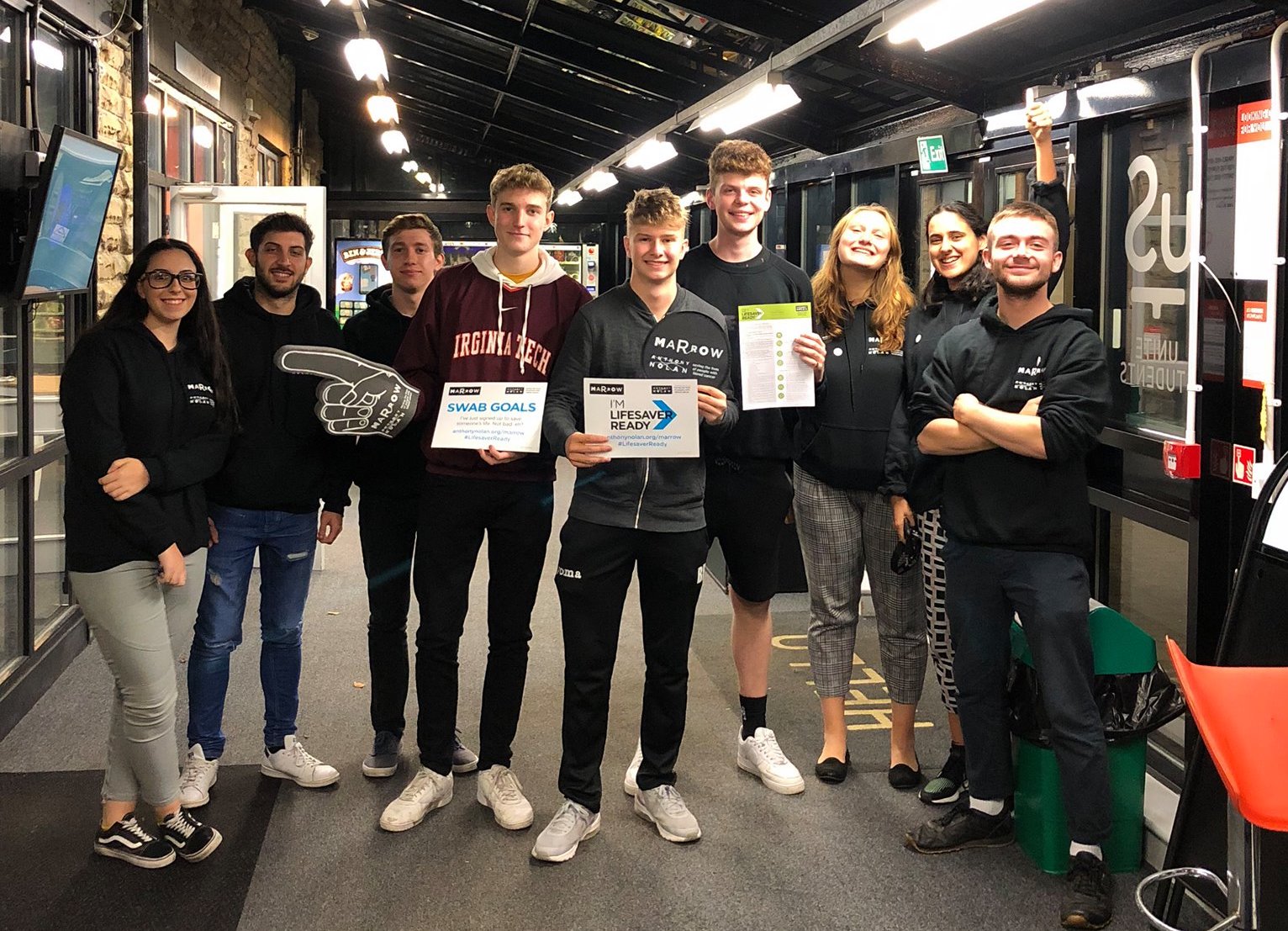Meet the society who are helping to save lives across the UK. From organising donation drives to training up new ambassadors, Leeds Marrow are making it easier than ever to get students aware of blood cancer treatment.
Nolan Trust, helping people sign up to their stem cell donor register. It’s a potential lifesaver and worthy cause – but why should we bother, and how does it all work?
Across the UK, a person is diagnosed with blood cancer every 20 minutes, and many are in need of stem cell transplants to give them a second chance at life. Unfortunately, only 1 in 3 people find a donor match in their family, and so have to rely on voluntary donors to help them out. The Anthony Nolan Trust, and Leeds Marrow as one of their student branches, actually get more people signed up to the register to increase their chance of finding a match.
Signing up is one of the easiest things in the world. You can chat to one of their volunteers who can be seen around campus and accommodations wearing black jumpers; they will explain that all you need to do is swab your cheeks for 30 seconds, and fill in a contact form for getting in touch if they match for you. Taking just 10 minutes of your time, it really couldn’t be simpler. Emily Munton, the head of Donor Recruitment, joined Leeds Marrow in January and was amazed at how “something so simple can make such an impact” on those who suffer from blood cancer. And, as a newly initiated volunteer, it amazed me to see how easy the sign-up was, and how many amazing people joined the register in just the two hours I was at our most recent event.
But what happens if you are actually a match for someone? There are a lot of preconceptions about donating, and it can make it sound really scary, but it’s actually a pretty trauma-free process. Although we are called ‘Marrow’, for most people – 90% in fact – it doesn’t involve bone marrow at all. If you are matched, you will receive some injections to get the stem cells going (it’s a completely natural process, just stimulated by the injections), and then you are hooked up to a machine which takes blood out of one arm, filters out the stem cells, and puts it back in the other. It can take a few hours, but isn’t painful, and most patients go home the same day, just feeling a bit groggy. For the other 10%, the process is a little longer but knowing it could save someone’s life, it’s worth it. You are given a general anaesthetic and stem cells are collected via bone marrow. These donors will be admitted to hospital for two nights and will experience aching and fatigue for up to a week after. If you are a donor, then you will be given more information, both by the Trust and the doctors during the process.
Since its creation, the group has signed up over 16,065 students, and of those, 103 have gone on to donate their cells and help to save a life. Last year alone, the society signed up 1,383 people.
Marrow holds two sign-up events every week in various locations that are easily accessible to students. Since its creation, the group has signed up over 16,065 students, and of those, 103 have gone on to donate their cells and help to save a life. Last year alone, the society signed up 1,383 people.
The President of Leeds Marrow, James Burns, got involved with Anthony Nolan early on; with his mother being a stem cell nurse in Birmingham, he was signed up as soon as he turned 16. When he got to university, he had no experience as a volunteer but went attended a training session, and found it a perfect fit.
James said that one of his main motivations is that “Leeds Marrow’s work directly saves people’s lives, which isn’t something every society can say!” It’s a sentiment that all of the volunteers can agree with, knowing that for the price of a few hours out of their week, they could possibly change someone’s life. It’s understandable that most volunteers have a close bond with Leeds Marrow, and often a personal story to go with it, as everyone is affected by cancer at some point in their life. Luckily, instead of bringing people down, this just makes the Leeds Marrow workers even more motivated. Their Volunteer and Training Co-ordinator, Izzy Rycroft, first held an event at her Sixth Form after finding a leaflet about Anthony Nolan and looking into the work they do. A testament to her skill in the position, 119 people signed up at that event, and she has kept up the numbers ever since.
Every year, there is a Marrow AGM, where the committees of all 50 university groups meet to ‘discuss ideas, plan ahead, and celebrate all of their astonishing achievements’. Last year Leeds was second place in sign-ups, just missing out to Belfast University. The AGM recognises all the work that the volunteers put in but also gives us the opportunity to hear from those working in blood cancer research and those who have benefitted from a stem cell donation.
If signing up to the stem cell register sounds like something you are interested in, the next sign-up event is:
- Tuesday 23rd October at Carnegie Village
Search Leeds Marrow in Facebook for training event dates or email the committee with any questions via marrow.leeds@gmail.com.
Whether it’s signing up to the donor register or volunteering, get involved and save some lives today!
Emily Durston
Leeds Marrow Volunteer

